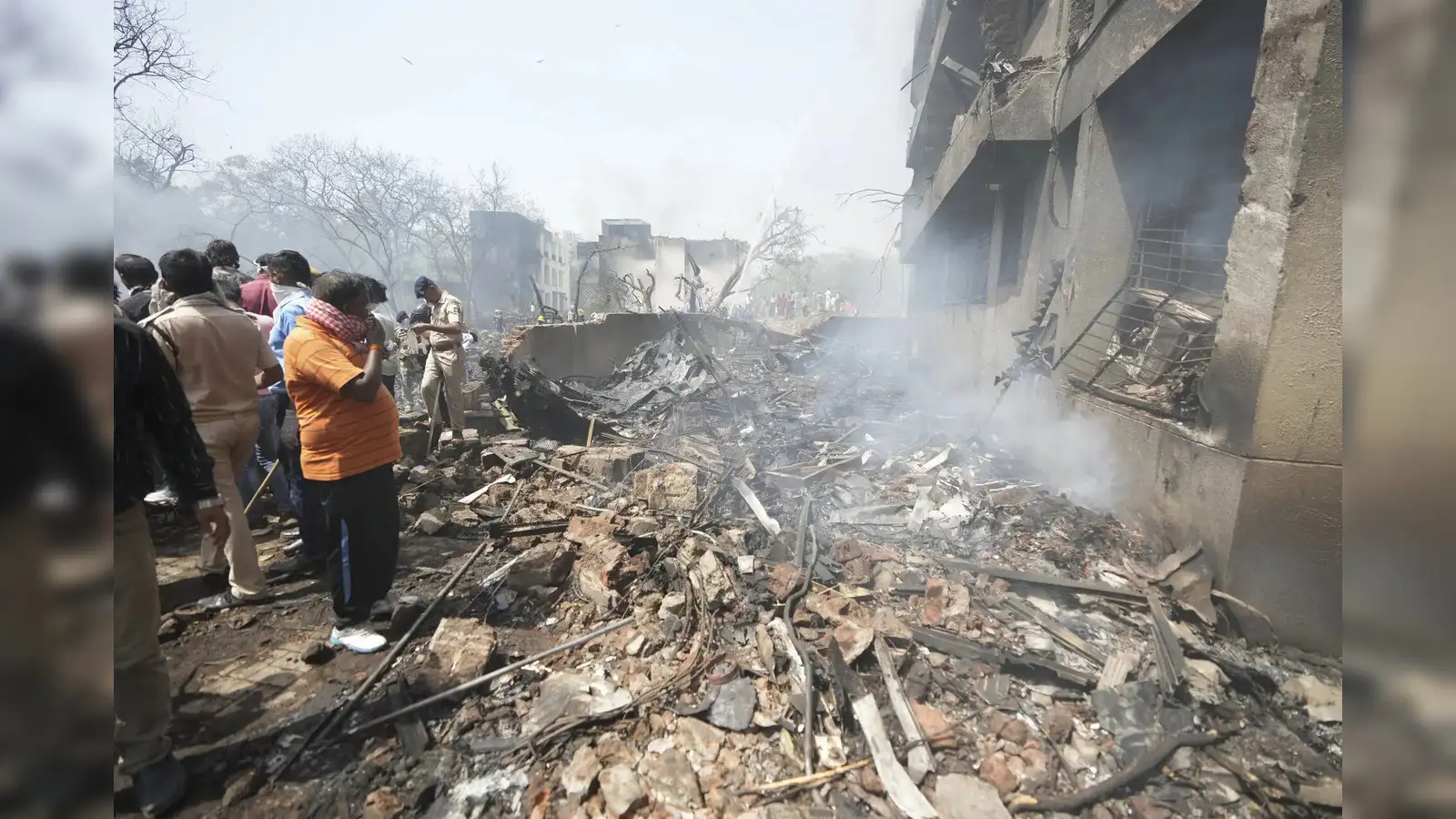Ahmedabad, June 12, 2025:
In a tragic aviation disaster that has shocked the nation and the global aviation community, Air India Flight AI171, a Boeing 787 Dreamliner, crashed shortly after takeoff from Sardar Vallabhbhai Patel International Airport in Ahmedabad on Thursday afternoon. The flight, bound for London Gatwick Airport, was carrying 242 passengers and crew members. There are no immediate reports of survivors, and investigations are underway to determine the cause of the fatal crash.
Crash Timeline: From Takeoff to Tragedy
According to Air Traffic Control (ATC) records, Flight AI171 departed from Runway 23 at 1:39 PM IST. Within minutes of takeoff, the pilot issued a MAYDAY distress call, signaling an emergency. However, after the initial alert, all communication ceased, and the aircraft plummeted into a densely populated area in the Meghani region, just outside the airport’s perimeter.
Witnesses in the locality reported hearing a loud explosion followed by plumes of thick black smoke and charred debris raining down. Social media videos show flames engulfing wreckage as emergency services rushed to the scene.
Authorities confirmed that the aircraft reached a maximum barometric altitude of 625 feet—just above the airport’s altitude of 200 feet—before it began a rapid descent with a vertical speed of -475 feet per minute, crashing moments later.
Five Possible Technical Failures Being Investigated
While the exact cause of the crash has not yet been determined, aviation experts and preliminary sources suggest the incident could be linked to one or more critical technical failures. Here are the five leading possibilities under investigation:
- Engine Failure Immediately After Takeoff
A catastrophic engine failure during the climb-out phase is considered one of the most dangerous scenarios in aviation. If one or both engines failed, it could have left the aircraft with insufficient power to maintain altitude. - Mechanical or Structural Snag Post-Takeoff
An undetected fault in hydraulic systems, flight controls, or airframe structure could have manifested just after takeoff, leaving the pilots with little control over the aircraft. - Flameout or Loss of Thrust
A flameout, where combustion in the engine stops abruptly, or a loss of thrust, might have left the aircraft unable to climb or turn back to the airport. - Avionics or Electrical System Failure
Failures in navigation, autopilot, or communications systems could have led to disorientation or inability to control the aircraft effectively during the critical early phase of flight. - Sensor or Instrument Malfunction
Incorrect readings from altitude, speed, or attitude sensors can lead to poor decisions by the flight crew, particularly during high-stress situations such as emergency climbs or engine issues.
Official Response and Ongoing Investigation
In an official statement released soon after the incident, Air India said:
“Flight AI171, operating Ahmedabad–London Gatwick, was involved in an incident today, June 12, 2025. We are currently ascertaining details and will provide updates via our website and official social media channels.”
The Directorate General of Civil Aviation (DGCA) has launched a high-level investigation, and a team from Boeing and Rolls-Royce (the engine manufacturer) is expected to arrive in Ahmedabad by Friday. Flight data recorders (black boxes) will be recovered and sent for analysis to determine the root cause.
A team of aviation forensic experts and engineers is already on the ground assessing the damage and collecting evidence from the crash site, now cordoned off by police and fire services.
Aftermath and Rescue Efforts
Rescue teams faced intense heat, fire, and debris at the crash site. Emergency responders worked through the wreckage to recover bodies and assist with identifying victims. Multiple fire engines, ambulances, and disaster management teams were deployed immediately after the incident.
Families of passengers, both domestic and international, have been directed to helplines set up by Air India. Psychological counseling and support have also been arranged at Ahmedabad and Gatwick airports.
Public and Global Reaction
Prime Minister Narendra Modi expressed his condolences in a statement:
“I am deeply anguished by the loss of lives in the Air India crash. My thoughts are with the families of those affected. We will ensure every support possible for the investigation and for the grieving families.”
Civil aviation experts around the world have termed the crash “deeply concerning,” especially as the Boeing 787 Dreamliner is considered one of the most modern and reliable aircraft in service.
Aviation Safety in Focus
This is one of the deadliest aviation accidents in India in recent years, bringing questions about aircraft maintenance, pilot training, and air traffic protocols back to the fore. While Air India has not had a major crash in over a decade, this incident is expected to trigger a nationwide safety audit of all Boeing aircraft in Indian fleets.
As India and the world mourn the loss of 242 lives aboard Flight AI171, attention turns to the cause. Was it a technical failure, pilot error, or a combination of both? The coming weeks will provide answers—but for now, families wait, a nation grieves, and aviation authorities brace for tough questions.







